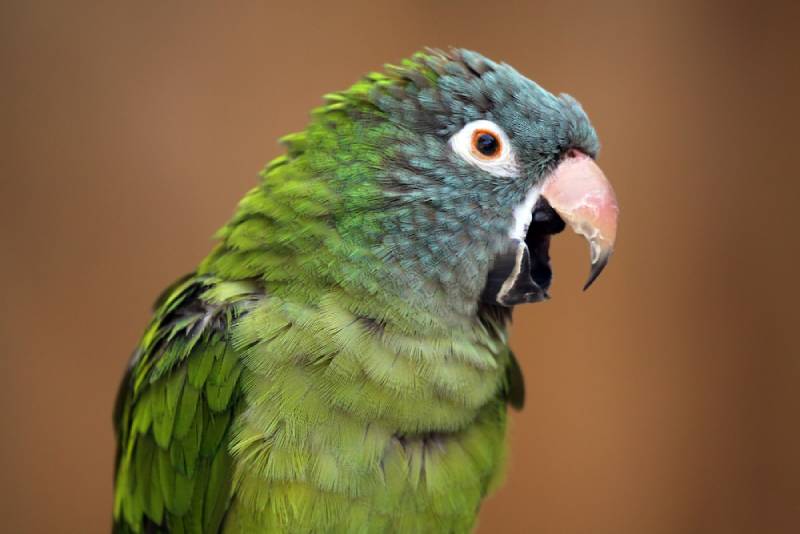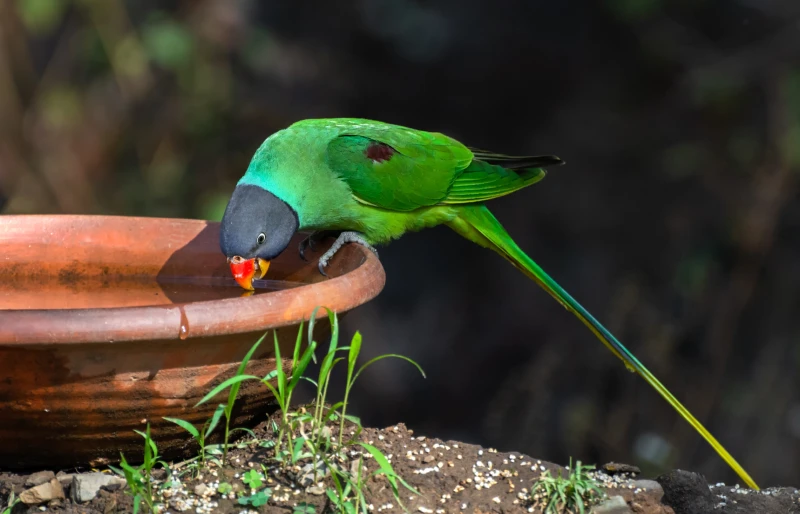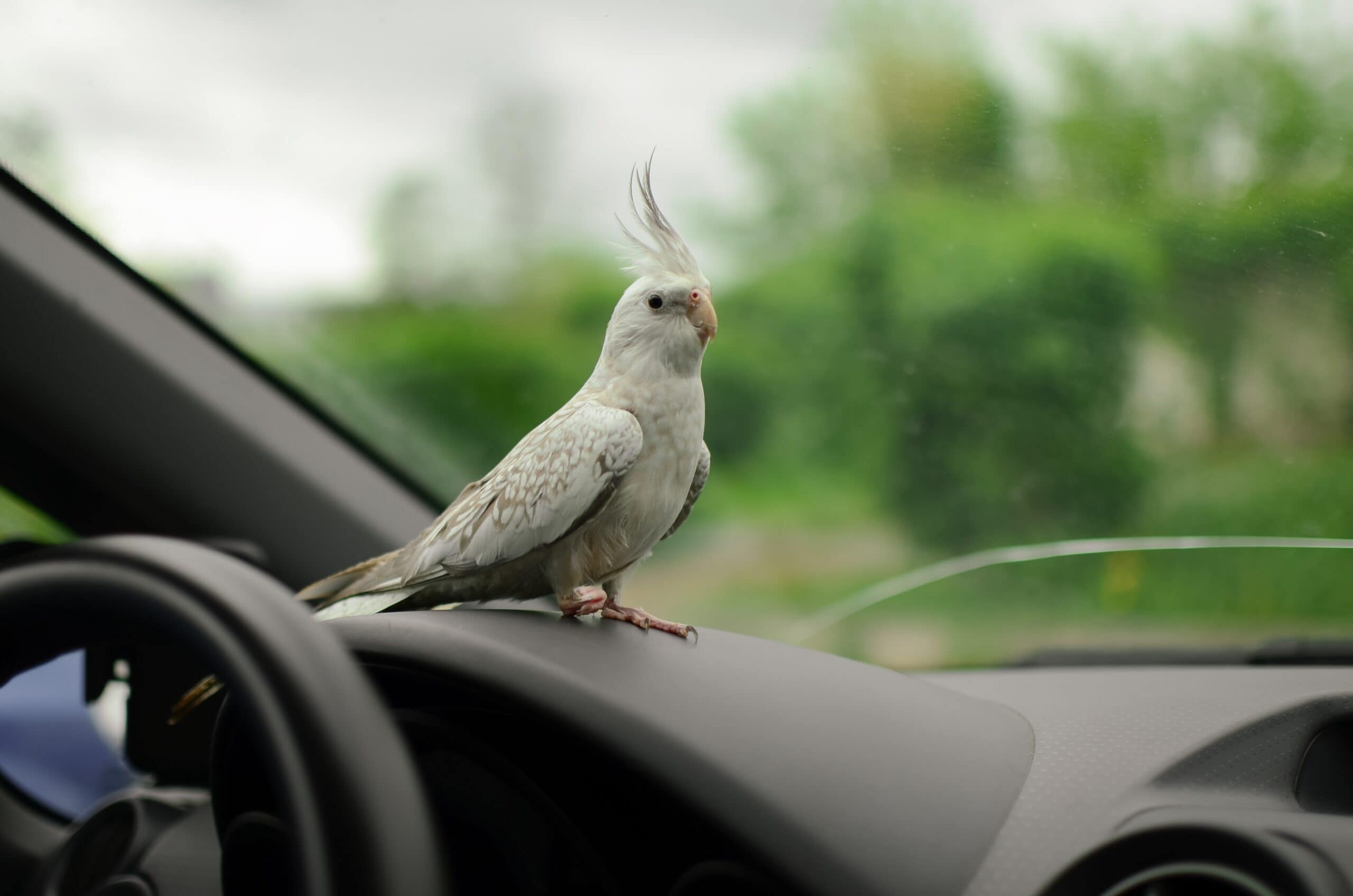Hyacinth Macaw Bird Species: Pictures, Personality, Food & Care Guide
Updated on

This article has been reviewed for factual accuracy by a qualified veterinarian. The views and opinions expressed herein are those of the author and do not necessarily represent the views or opinions of the veterinarian. This article is designed to provide a general overview of bird care only, and does not replace the advice of veterinary professionals tailored to the needs of your pet.
Click to Skip Ahead
What Great Danes are to the dog world, Hyacinth Macaws (Anodorhynchus hyacinthinus) are to the bird family. As one of the largest and most majestic parrots, Hyacinth Macaws are just as big in personality. The gorgeous and social Hyacinth Macaw can make a truly one-of-a-kind pet. However, they don’t always thrive in captivity and can be extremely challenging to care for. Read on to learn more about the Hyacinth Macaw.
Species Overview
| Color: | Blue |
| Size: | 37.5-39.5 inches long |
| Weight: | 2-3.5 pounds |
| Wingspan: | 5 feet |
With their size and color, Hyacinth Macaws never fly under the radar, and the chance to own such a beautiful, intelligent, and large bird will always appeal to unique pet owners. The fact that they’re so rare and expensive only enhances that appeal for some.
It’s vital to thoroughly research what it takes to own and care for a Hyacinth Macaw before considering it seriously. In this article, you’ll find an overview of what you need to know about owning a Hyacinth Macaw.
Hyacinth Macaw Characteristics
History & Natural Habitat
The Hyacinth Macaw is the largest species of parrot and one of the most beautiful. They are “New World” parrots native to South America. Hyacinth Macaws are found mainly in Brazil, with small populations in eastern Bolivia and northeastern Paraguay.
The Hyacinth Macaw prefers to live in wetlands, grassy habitats, or swamps with limited forest cover. They generally live in groups of 10–30, roosting together in the trees at night and foraging for food during the day. Hyacinth macaws are quite vocal, constantly calling their mates and companions.
Equipped with one of the strongest beaks in the world, Hyacinth Macaws feed primarily on nuts, especially palm nuts, macadamias, and coconuts. While eating, they help spread the seeds to repopulate the forest. They form monogamous breeding pairs and lay only one to three eggs each year.
Their eggs are vulnerable to predators, and only a comparatively small number of baby birds are hatched each year. This reproductive difficulty, combined with habitat loss and the illegal pet trade, has made the Hyacinth Macaw a vulnerable species.
Importing, buying, or owning a wild Hyacinth Macaw in the United States is illegal. Only captive-bred birds can be sold and owned legally. Each state has different laws around owning these birds, and some will require you to have a permit. Check the ownership laws for your area before considering purchasing one of these birds.

Things to Know When Owning a Hyacinth Macaw
Hyacinth Macaws are incredibly difficult to care for properly in human care. They should only be owned by experienced bird handlers with sufficient space and knowledge to keep them. Because of their rarity, cost, and space needs, most captive Hyacinth Macaws are found in zoos, aquariums, aviaries, or breeding programs. Here’s what you need to know if you’re considering taking on a Hyacinth Macaw.
Temperament
In the proper environment and with the right owner, Hyacinth Macaws can make affectionate, playful, and curious pets. They are highly social, like most parrots, and need the company of other birds or their human owners. Hyacinth Macaws are often labeled “gentle giants,” but even gentle play from a bird of this size can be rough.
Hyacinth Macaws can be nippy when playing, and the size and strength of their beak means even a playful bite can do damage. They can develop behavioral issues such as excessive vocalizing and self-mutilation without enough room to exercise or daily social contact. They are intelligent, sensitive birds who require a great deal of attention.
Sounds, Speech & Vocalizations
Hyacinth macaws are one of the noisiest parrots. In the wild, they communicate over long distances with loud screams. Pet Hyacinth Macaws will quickly earn you a lot of dirty looks and complaints from your neighbors if you live in a densely populated area. While not the best talkers in the parrot family, Hyacinth Macaws are smart enough to learn to mimic human speech. They can also learn to use words in the right context.
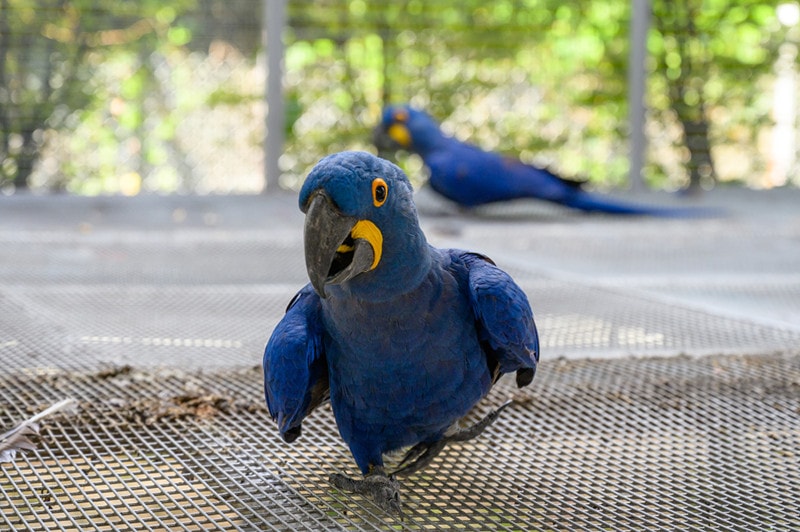
Hyacinth Macaw Appearance
Hyacinth Macaws are also known as Blue Macaws because they only come in one color variation. The birds are almost entirely blue all over their bodies, including their wings and tails. The underside of their wings may be yellow or brown.
They have hooked black beaks with patches of yellow at the base and corners. Their dark eyes also have a yellow ring around them. Like most parrots, Hyacinth Macaws spend much of their time climbing and perching among the trees.
They have short, strong legs with two toes pointing forward and two toes pointing backward. These adaptations allow them to grip trees and branches easily. The Hyacinth is the largest Macaw species and the longest member of the parrot family. Their wingspan can reach a full 5 feet in length.
Caring for the Hyacinth Macaw
Owning and caring for a Hyacinth Macaw is both time-consuming and expensive. An inexperienced keeper should never own this bird. They often struggle with life as a pet when their needs are not met.
Hyacinth Macaws require a lot of space to move around and generally do best when kept in pairs or with other macaws. Single Hyacinth Macaws require dedicated daily attention from their human owners to prevent undesirable behavior.
It’s best to introduce them to companion birds early and monitor them carefully. As we mentioned earlier, the giant Hyacinth Macaw tends to play rough.
They are loud and can be destructive. Their natural behaviors include frequent vocalizations, chewing, and flying between trees. They require a large amount of food due to their size and metabolism.
Hyacinth Macaws may require regular beak trims, even when provided with plenty of safe chewing items. Some owners keep their wings trimmed, but that doesn’t completely eliminate their need for space. They cannot be kept confined to a cage all day.
Keeping a Hyacinth Macaw healthy can be tricky because their natural diet is so specific. It’s also tough to get them enough exercise and socialization to prevent boredom and potentially self-mutilating behavior (feather plucking).

Diet & Nutrition
As we discussed earlier, the Hyacinth Macaw’s natural diet is primarily made up of nuts. They need to eat a lot of fat to stay healthy. Hyacinth Macaws will appreciate being allowed to forage for food, as they do in the wild.
Captive Hyacinth Macaws can eat common unsalted nuts such as walnuts, sweet almonds, or cashews, as 15% of their diet to meet their high fat requirement. However, care should be taken as excessive fat leads to obesity and heart/blood vessel disease. They can also consume various fruits and vegetables, offered fresh daily. Finally, a pellet diet formulated for Macaws should also be provided.
If you’re trying to feed a Hyacinth Macaw, it’s vital to consult with a veterinarian who specializes in birds. They may have different dietary needs at various life stages or during reproduction.
Cage/Housing Requirements
Hyacinth Macaws can’t be housed in most commercial bird cages. If you must keep a Hyacinth Macaw in a cage, you’ll most likely need a large, custom-built enclosure.
Because of their size, Hyacinth Macaws do better when kept in a bird-proofed room, patio, or outdoor aviary. This gives them enough space to fly, socialize, and perform natural behaviors like climbing and foraging for food.
Wherever they’re housed, you’ll need to provide access to plenty of safe , wooden chew objects and climbing items. A play gym or replaceable play trees are good options, and branches make good toys and chewing objects (just make sure they are non-toxic for birds).
Exercise
Hyacinth Macaws are large, playful birds. They need time and space for exercise daily. If their wings are intact, Hyacinth Macaws need room to fly between trees and perches, as they do in the wild.
Birds with clipped wings still want to climb, socialize, and play each day. They always need access to toys for chewing and enrichment. Hyacinth Macaws kept primarily in cages will need even more free time outside of them to exercise.
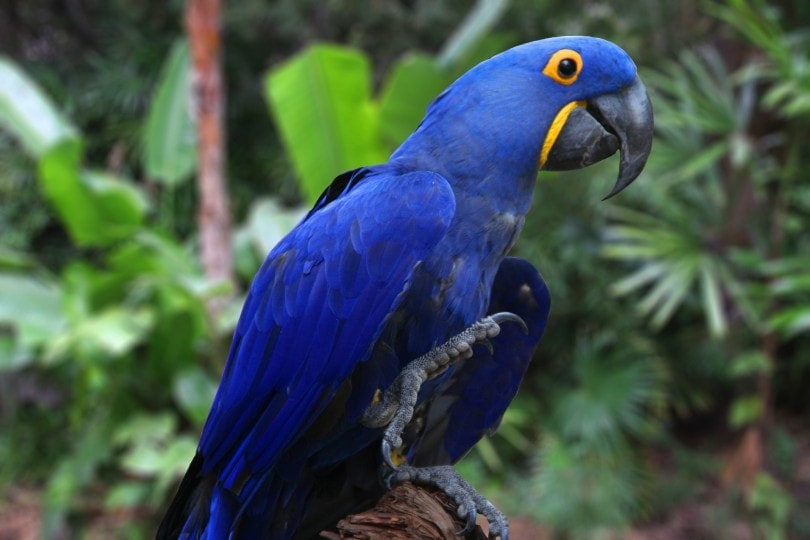
Health & Conditions
Hyacinth Macaws are tough to keep as pets unless you really know what you’re doing. Without the proper care, they’re vulnerable to health conditions that can shorten their lifespan. Wild Hyacinth Macaws can live over 50 years, while they tend to live 30–50 years in captivity.
- Overgrown beaks
- Papillomas (depending on location and size)
- Proventricular dilatation disease or Macaw wasting disease
- Psittacine beak and feather disease
- Psittacosis
- Cancer
3 Little-Known Facts About The Hyacinth Macaw
1. Wild Populations of Hyacinth Macaws Are Showing Signs of Recovery.
From 2000 to 2013, wild Hyacinth Macaws were considered an endangered species. Now, they are classified as “vulnerable” instead. Many captive Hyacinth Macaws are part of breeding programs aiming to boost wild populations on the road to recovery.
2. Their Beaks Can Apply More Than 300 pounds of Pressure Per Square Inch.
It’s no wonder a Hyacinth Macaw can crack open a coconut with their beak!

3. They Have No Known Predators.
In the wild, adult Hyacinth Macaws have no natural predators. However, various species, including Coatis and Opossums, will prey on their eggs if given the chance.
Conclusion
Hyacinth macaws are undoubtedly one of the most unique and striking species of pet birds. However, they are also among the most challenging to care for and the hardest to purchase legally. Owning a Hyacinth Macaw is a genuine lifelong commitment and one that should only be attempted by someone with the resources and experience to do it correctly.
Featured Image Credit: GTW, Shutterstock



